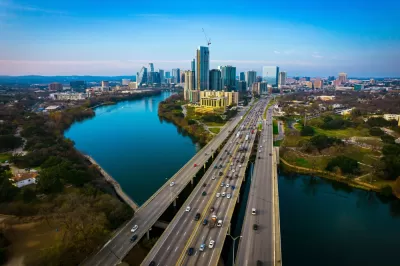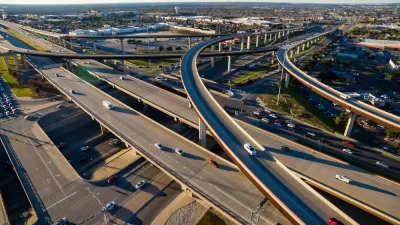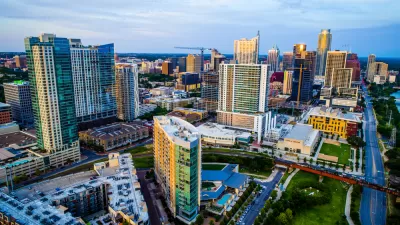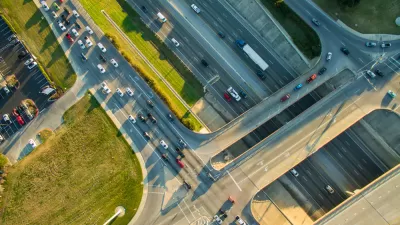Texas’ transportation priorities were on display in March—a few days after the gutting of a transit plan, a highway expansion broke ground depite years of local opposition.

The Texas Department of Transportation (TxDOT) broke ground on the I-35 Capital Express Central Project, a $606 million project to add a high-occupancy vehicle (HOV) lane in each direction on an eight-mile stretch between U.S. 290 East and Texas State Highway 45.
According to an article by Nathan Bernier, the groundbreaking took place with local officials on hand to praise the investment and protestors in the background chanting in opposition of the environmental damage and loss of useable land as a result of the project. Earlier in March, Bernier also reported that the project would seize land from Waller Beach Park for construction.
“State and local officials gave speeches praising the project outside a TxDOT office in North Austin. They were heckled throughout by a group of about 20 protesters with the nonprofit Rethink35, which calls for replacing the highway with a boulevard. Demonstrators stood at the edge of TxDOT's property, chanting over the roar of I-35 traffic behind them,” writes Bernier of the scene at the groundbreaking.
The Austin City Council and local advocates repeatedly tried to block the plan to widen I-35 where it cuts through the city’s core, but TxDOT announced its final decision to move forward with the HOV lanes in November 2022.
The groundbreaking took place just a few days after the Austin Transit Partnership and Capital Metro announced a drastic reduction of the Project Connect transit investment plan due to rising costs.
FULL STORY: Construction starts in North Austin on five-year project to expand I-35

Planetizen Federal Action Tracker
A weekly monitor of how Trump’s orders and actions are impacting planners and planning in America.

Congressman Proposes Bill to Rename DC Metro “Trump Train”
The Make Autorail Great Again Act would withhold federal funding to the system until the Washington Metropolitan Area Transit Authority (WMATA), rebrands as the Washington Metropolitan Authority for Greater Access (WMAGA).

The Simple Legislative Tool Transforming Vacant Downtowns
In California, Michigan and Georgia, an easy win is bringing dollars — and delight — back to city centers.

DC Backpedals on Bike Lane Protection, Swaps Barriers for Paint
Citing aesthetic concerns, the city is removing the concrete barriers and flexposts that once separated Arizona Avenue cyclists from motor vehicles.

In These Cities, Most New Housing is Under 441 Square Feet
With loosened restrictions on “micro-housing,” tiny units now make up as much as 66% of newly constructed housing.

Albuquerque’s Microtransit: A Planner’s Answer to Food Access Gaps
New microtransit vans in Albuquerque aim to close food access gaps by linking low-income areas to grocery stores, cutting travel times by 30 percent and offering planners a scalable model for equity-focused transit.
Urban Design for Planners 1: Software Tools
This six-course series explores essential urban design concepts using open source software and equips planners with the tools they need to participate fully in the urban design process.
Planning for Universal Design
Learn the tools for implementing Universal Design in planning regulations.
Smith Gee Studio
City of Charlotte
City of Camden Redevelopment Agency
City of Astoria
Transportation Research & Education Center (TREC) at Portland State University
US High Speed Rail Association
City of Camden Redevelopment Agency
Municipality of Princeton (NJ)





























